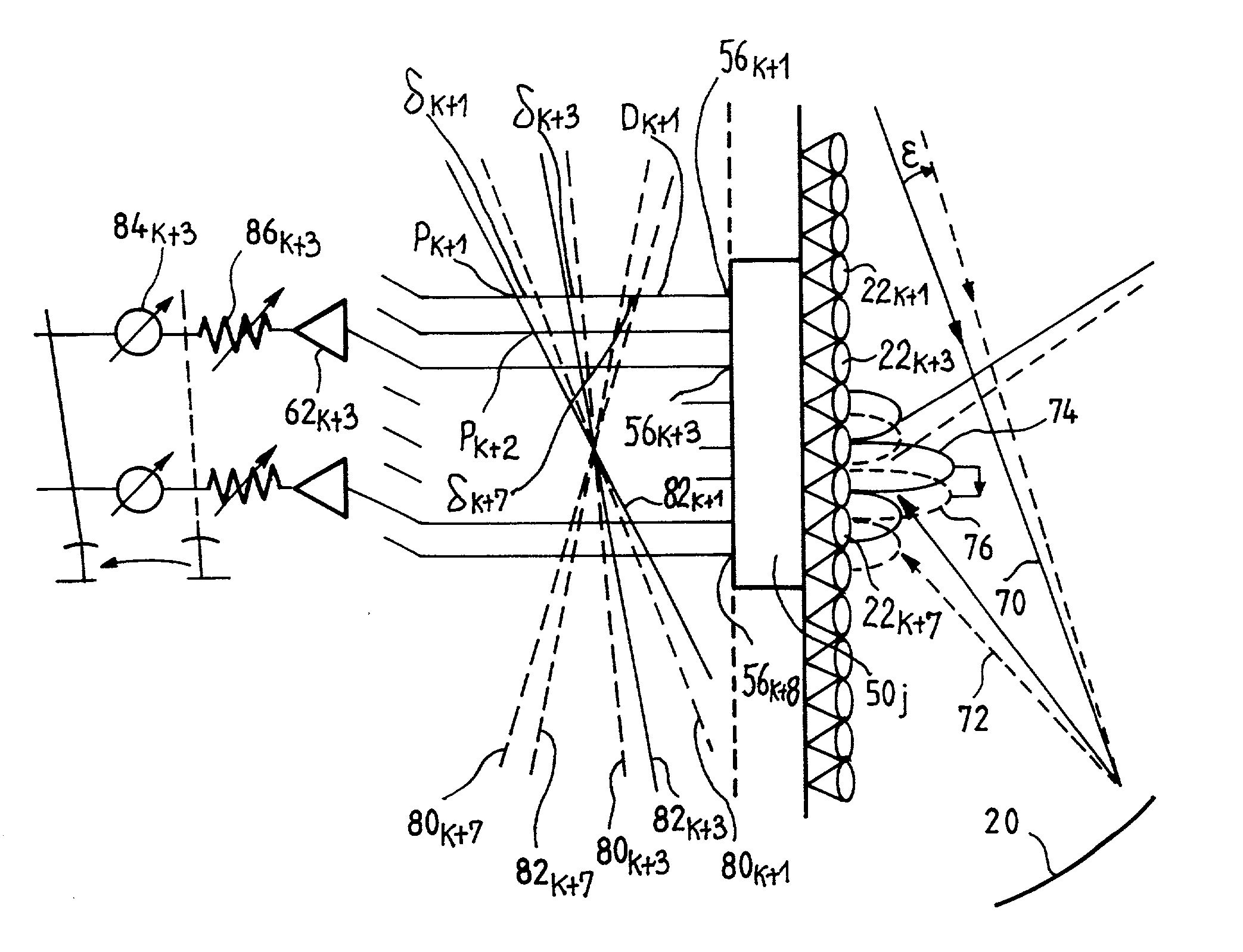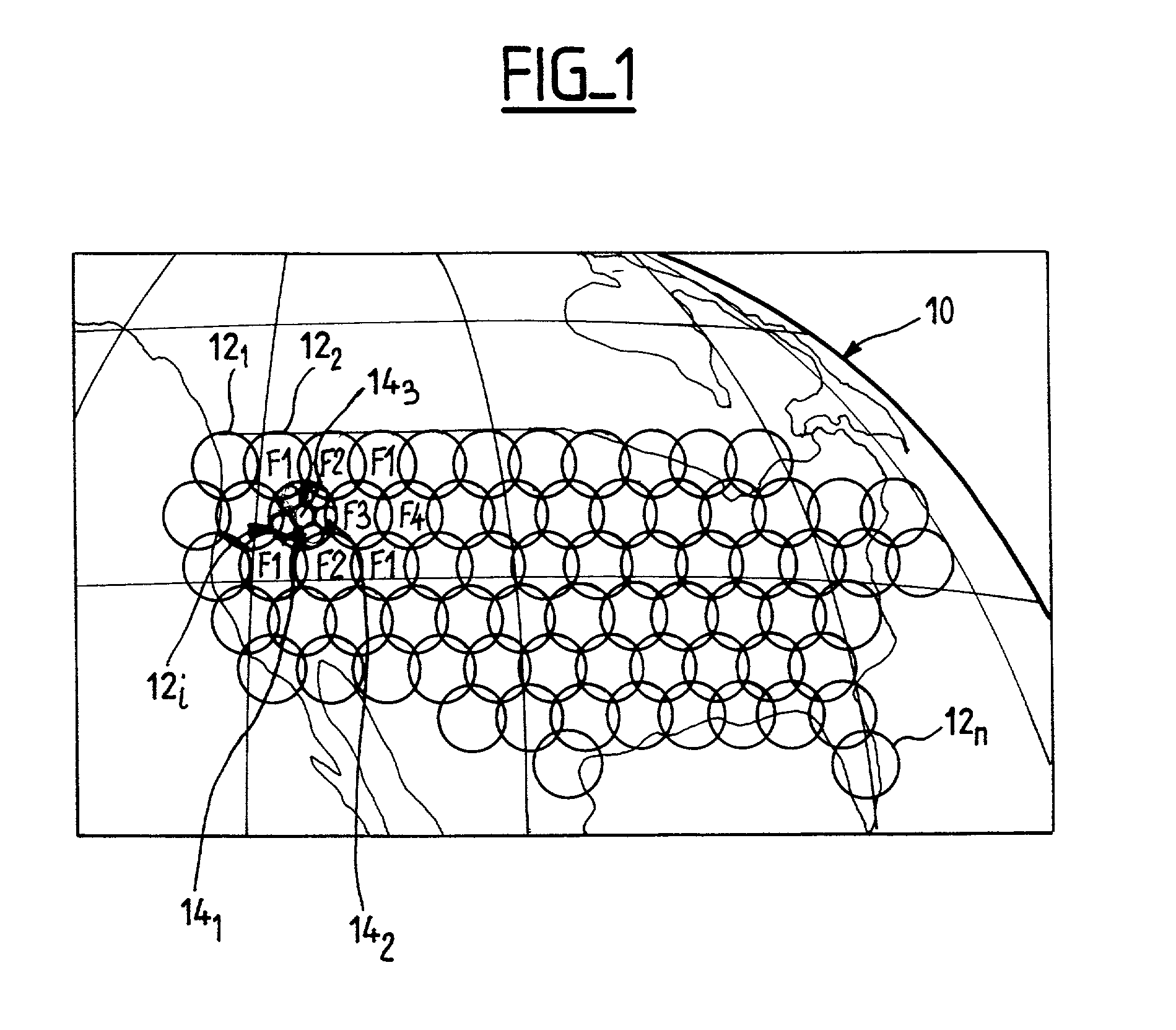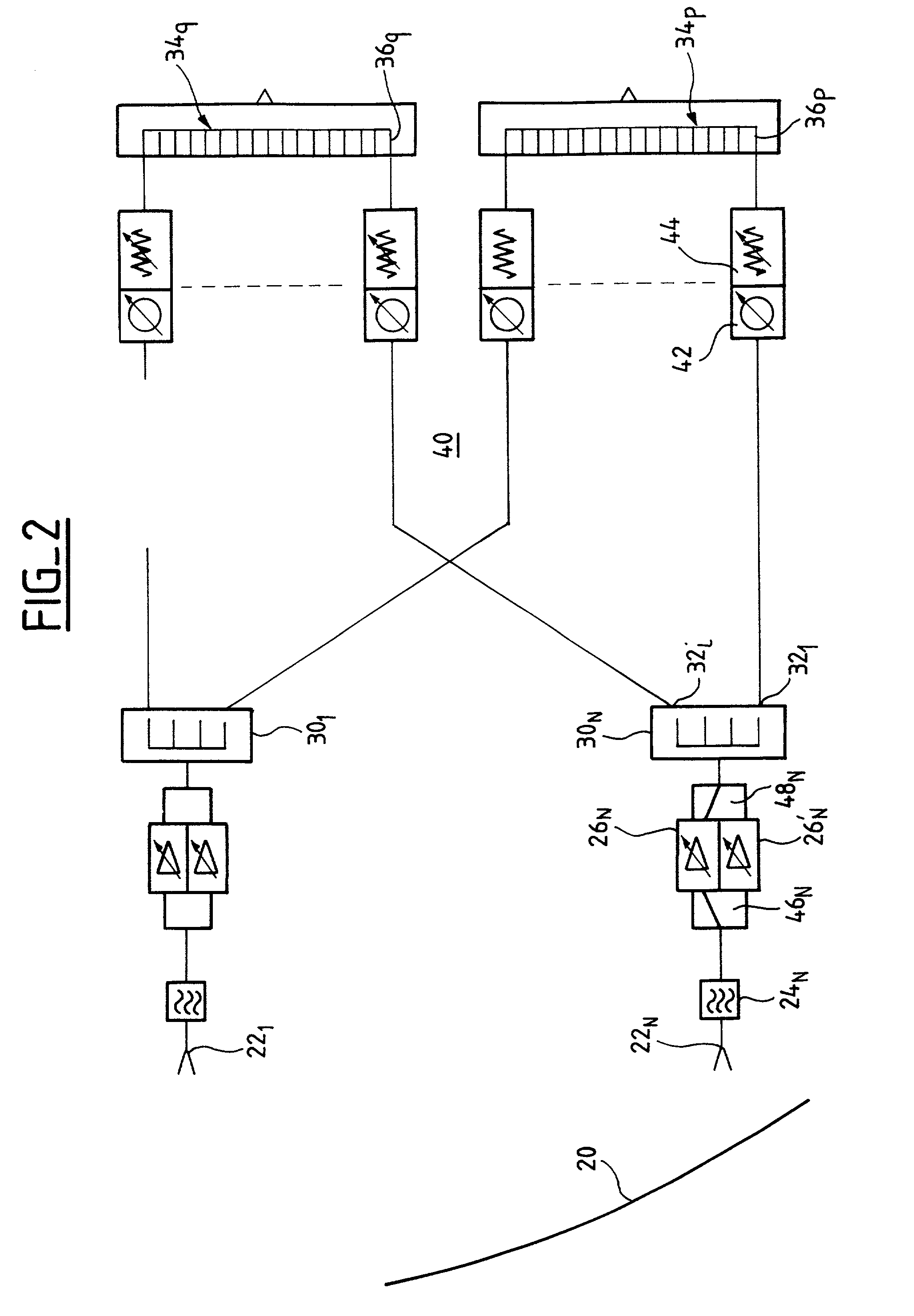Telecommunications antenna intended to cover a large terrestrial area
a technology for terrestrial areas and telecommunications antennas, applied in antennas, antenna adaptation in movable bodies, active radio relay systems, etc., can solve problems such as large number of components, and achieve the effect of reducing the number of low-noise amplifiers
- Summary
- Abstract
- Description
- Claims
- Application Information
AI Technical Summary
Benefits of technology
Problems solved by technology
Method used
Image
Examples
Embodiment Construction
[0049] Like the antenna shown in FIG. 2, the receive antenna shown in FIG. 3 includes a reflector (not shown in FIG. 3) and a plurality of radiating elements 22.sub.1, . . . , 22.sub.N disposed in the vicinity of the focal area of the reflector.
[0050] In the FIG. 3 example, the receive antenna includes a plurality of Butler matrices 50.sub.1, . . . , 50.sub.j . . . , 50.sub.p. The matrices are all identical, with the same number of inputs and outputs.
[0051] Each input receives the signal from a radiating element. Thus the Butler matrix 50.sub.j has eight inputs 52.sub.1 to 52.sub.8 and the input 52.sub.1 receives the signal from the radiating element 22.sub.k+1. The input 52.sub.8 receives the signal from the radiating element 22.sub.k+8. In one embodiment, the radiating elements 22.sub.k+1 to 22.sub.k+8 are all assigned to one area, i.e. to one beam. However, as indicated above, some of these radiating elements also contribute to forming other beams for adjacent areas.
[0052] Each o...
PUM
 Login to View More
Login to View More Abstract
Description
Claims
Application Information
 Login to View More
Login to View More - R&D
- Intellectual Property
- Life Sciences
- Materials
- Tech Scout
- Unparalleled Data Quality
- Higher Quality Content
- 60% Fewer Hallucinations
Browse by: Latest US Patents, China's latest patents, Technical Efficacy Thesaurus, Application Domain, Technology Topic, Popular Technical Reports.
© 2025 PatSnap. All rights reserved.Legal|Privacy policy|Modern Slavery Act Transparency Statement|Sitemap|About US| Contact US: help@patsnap.com



